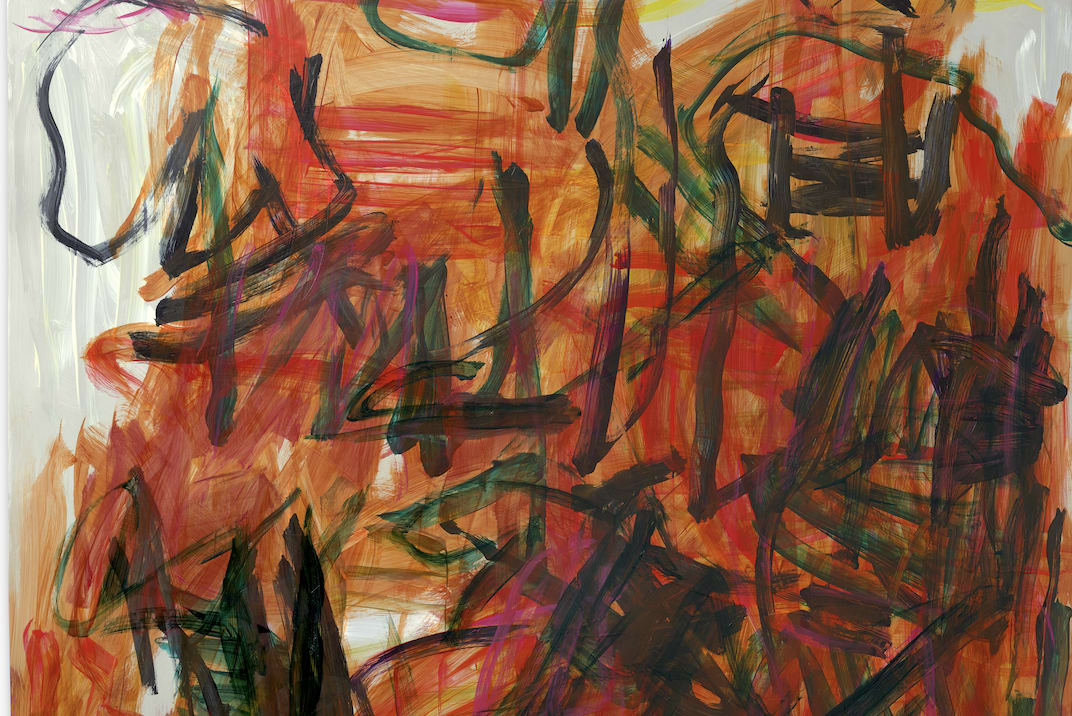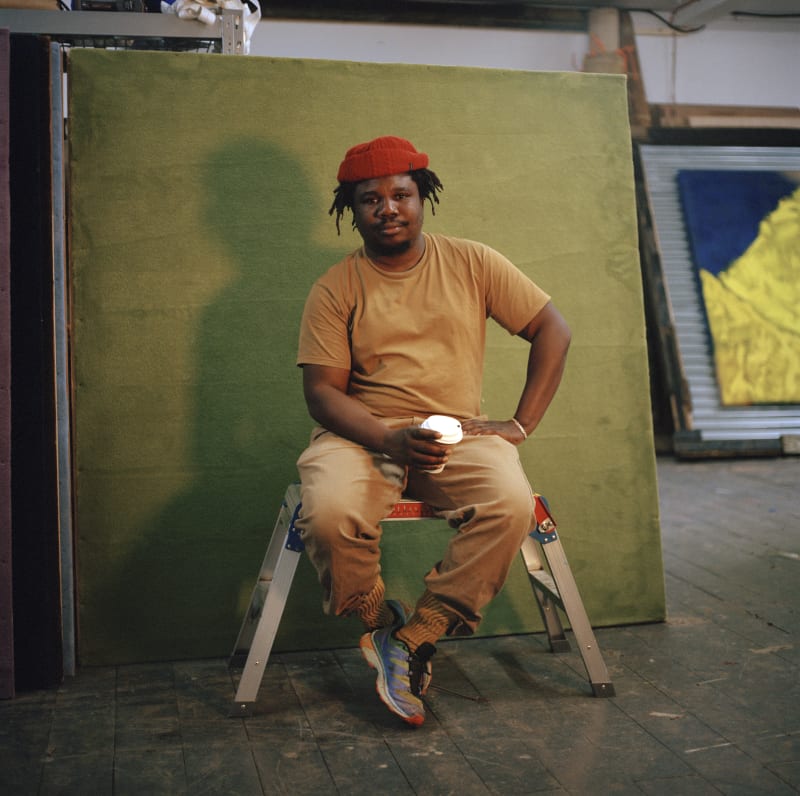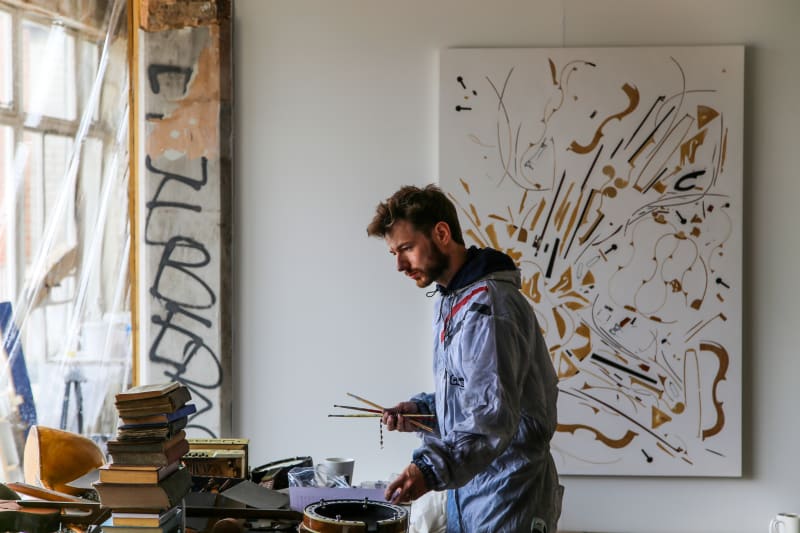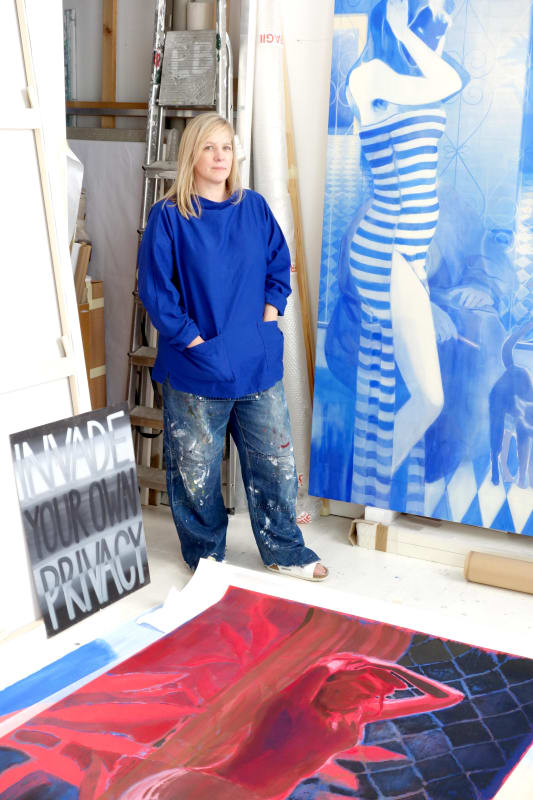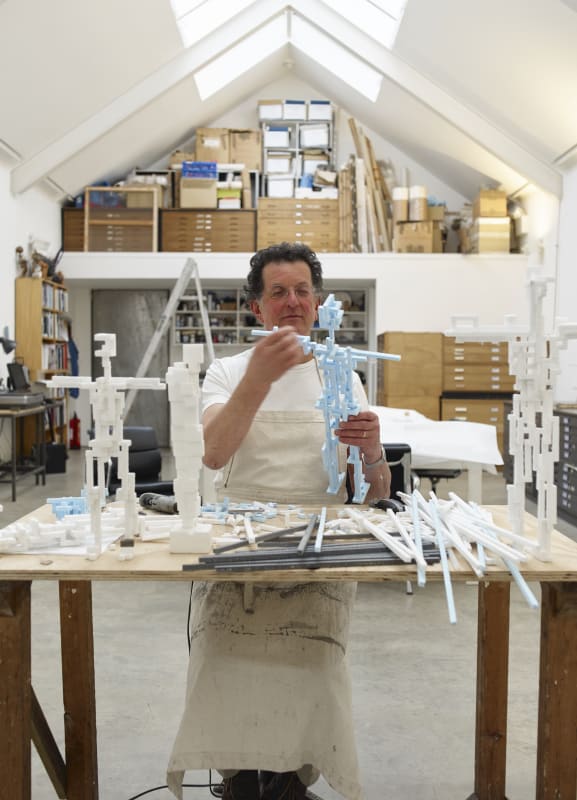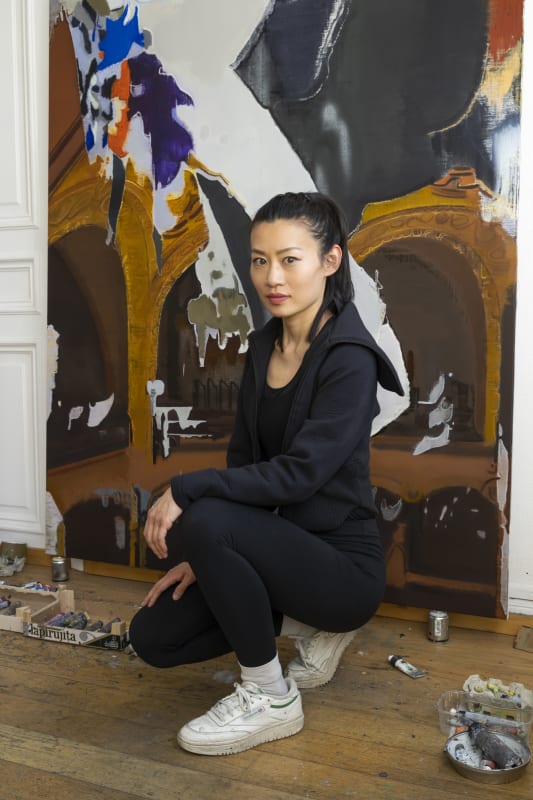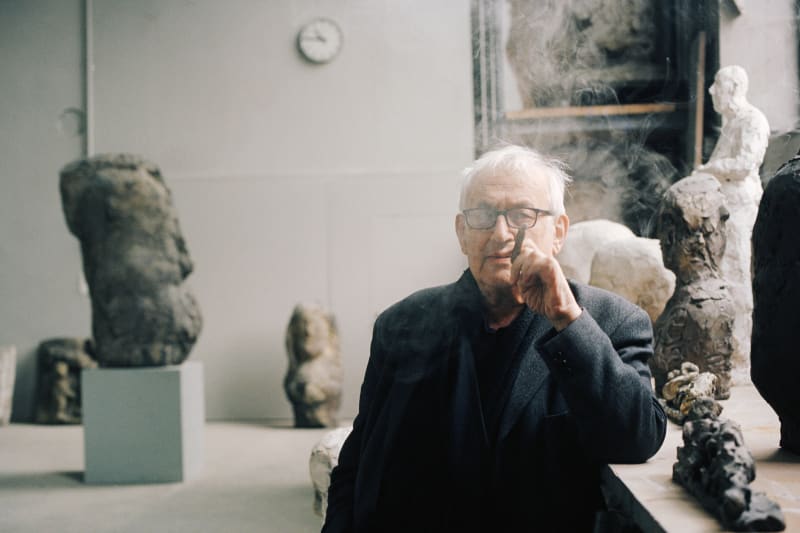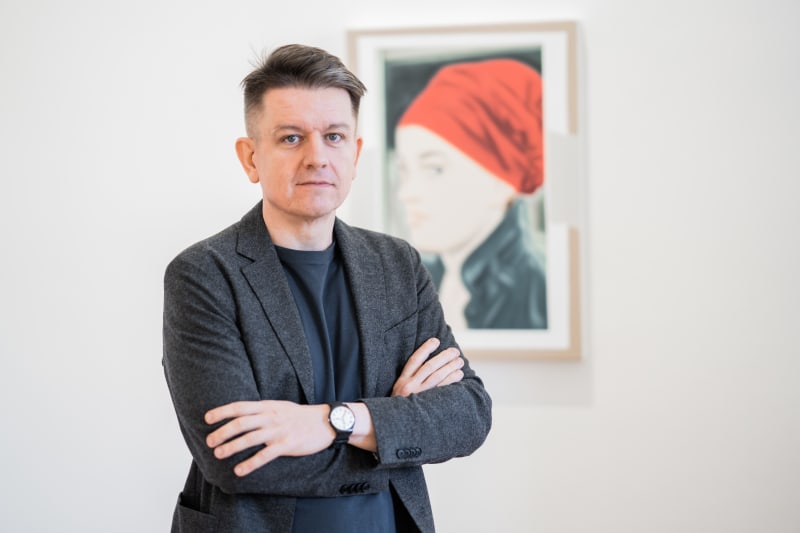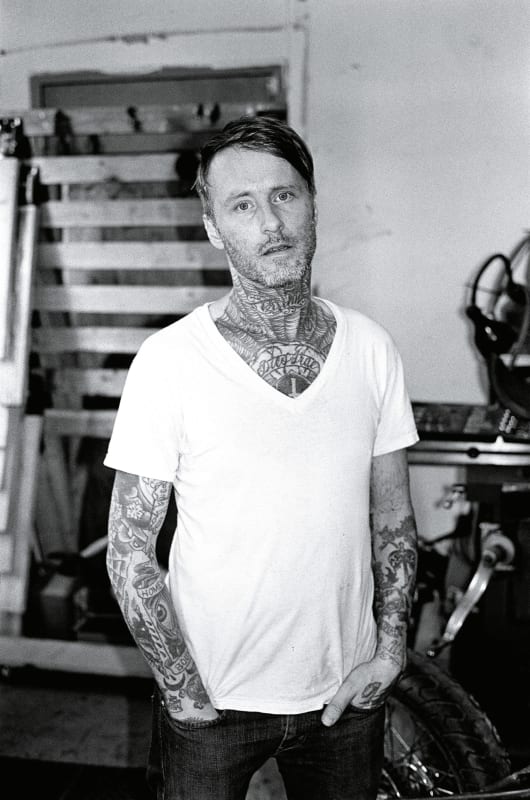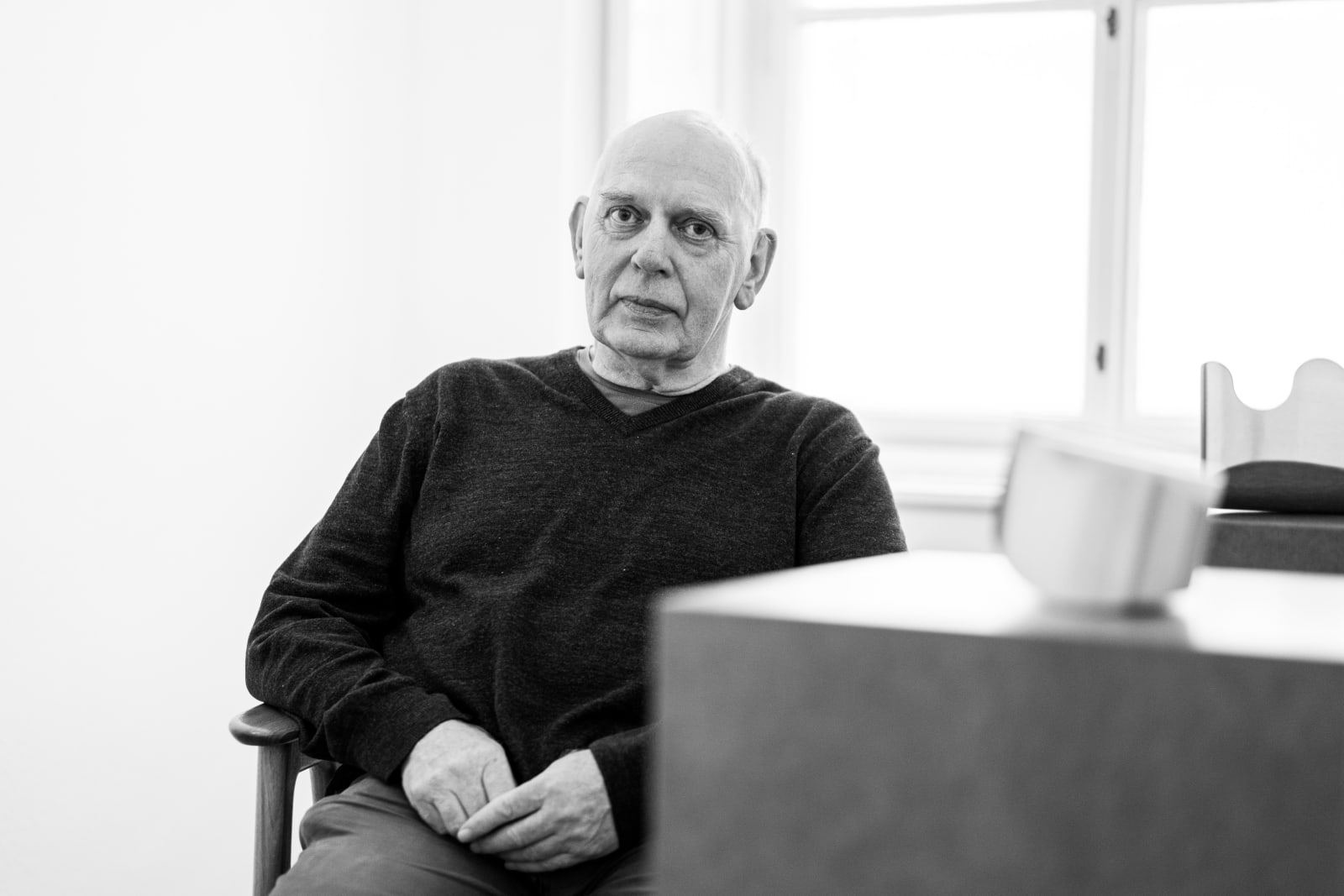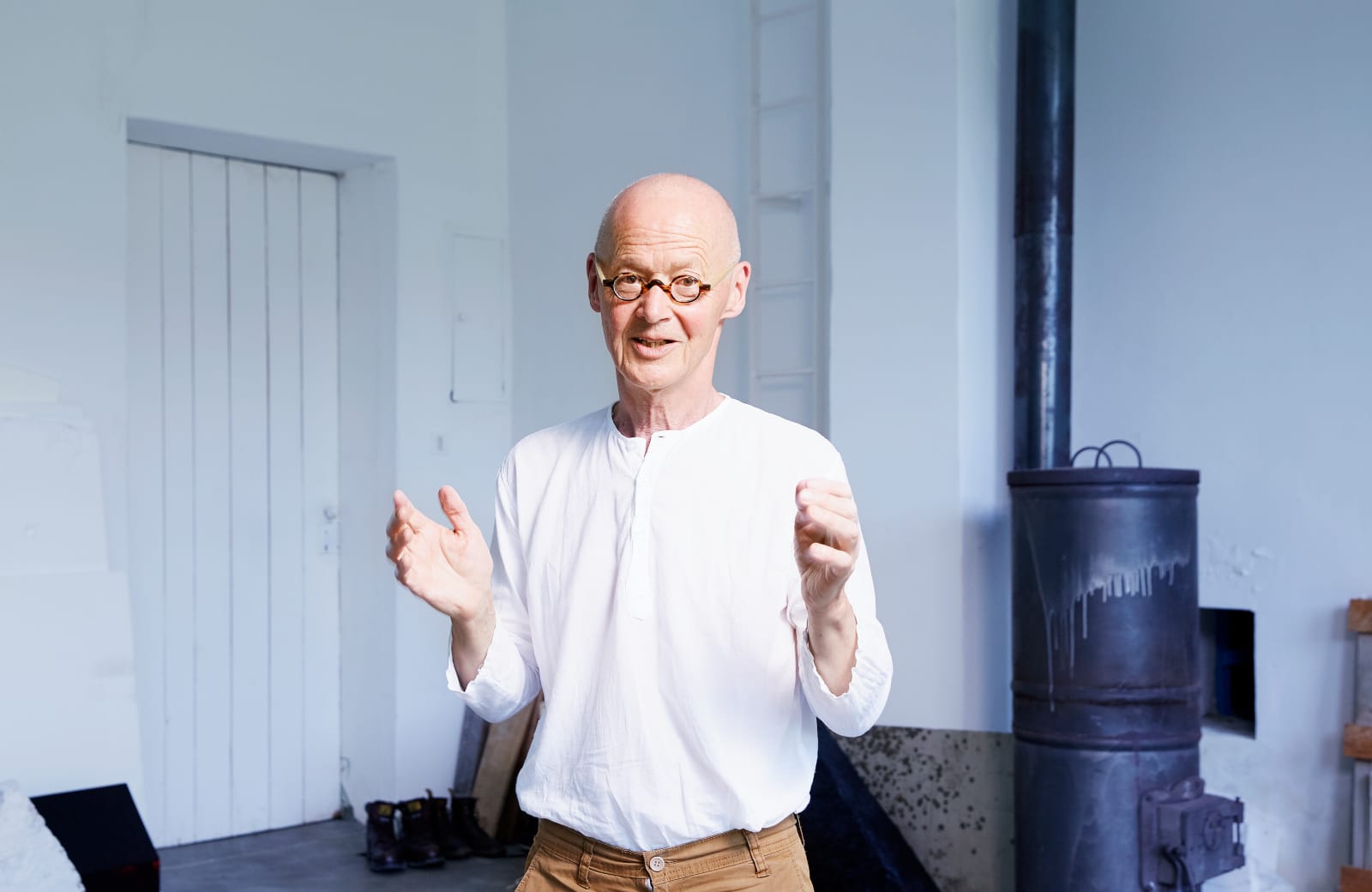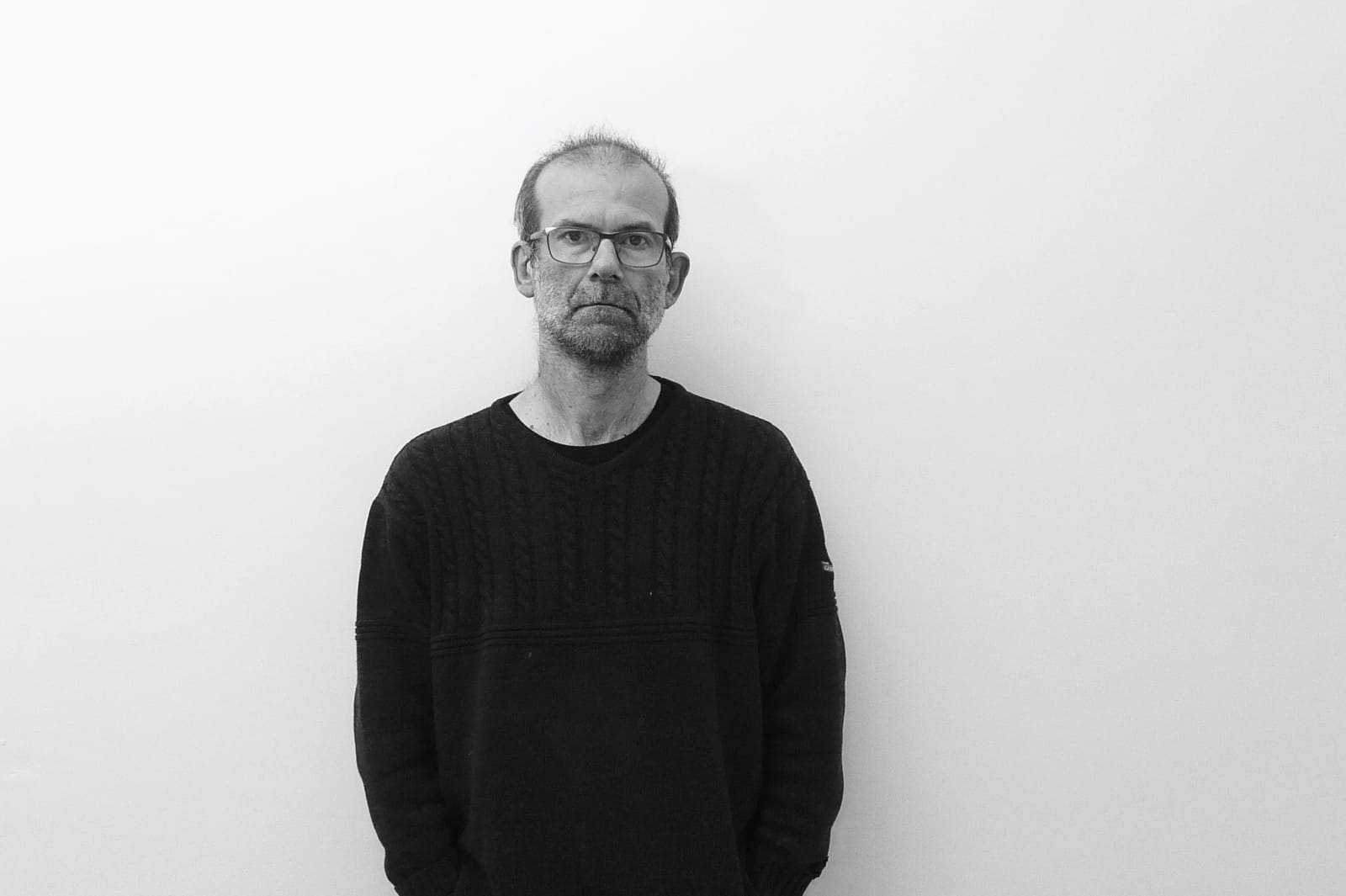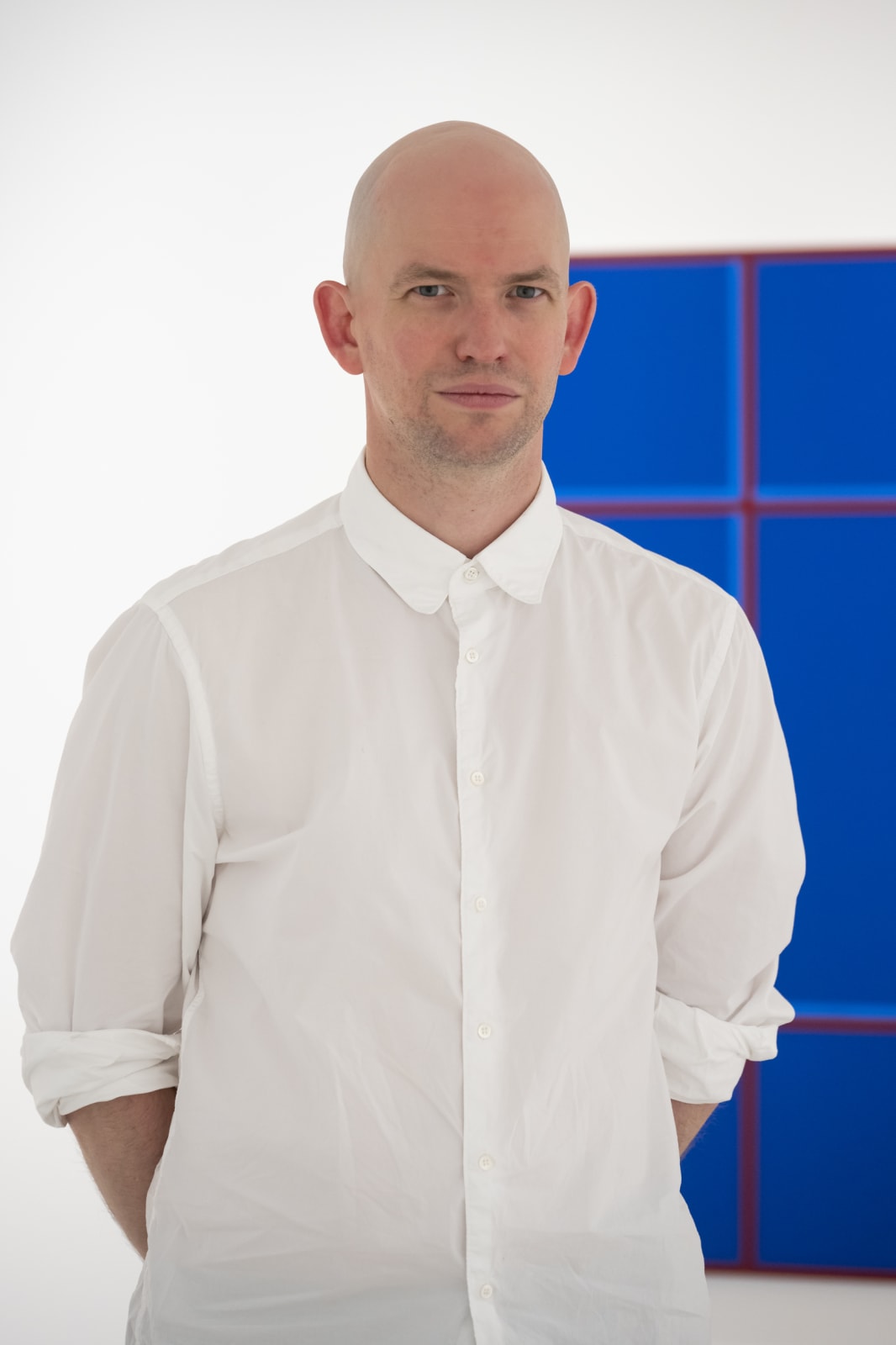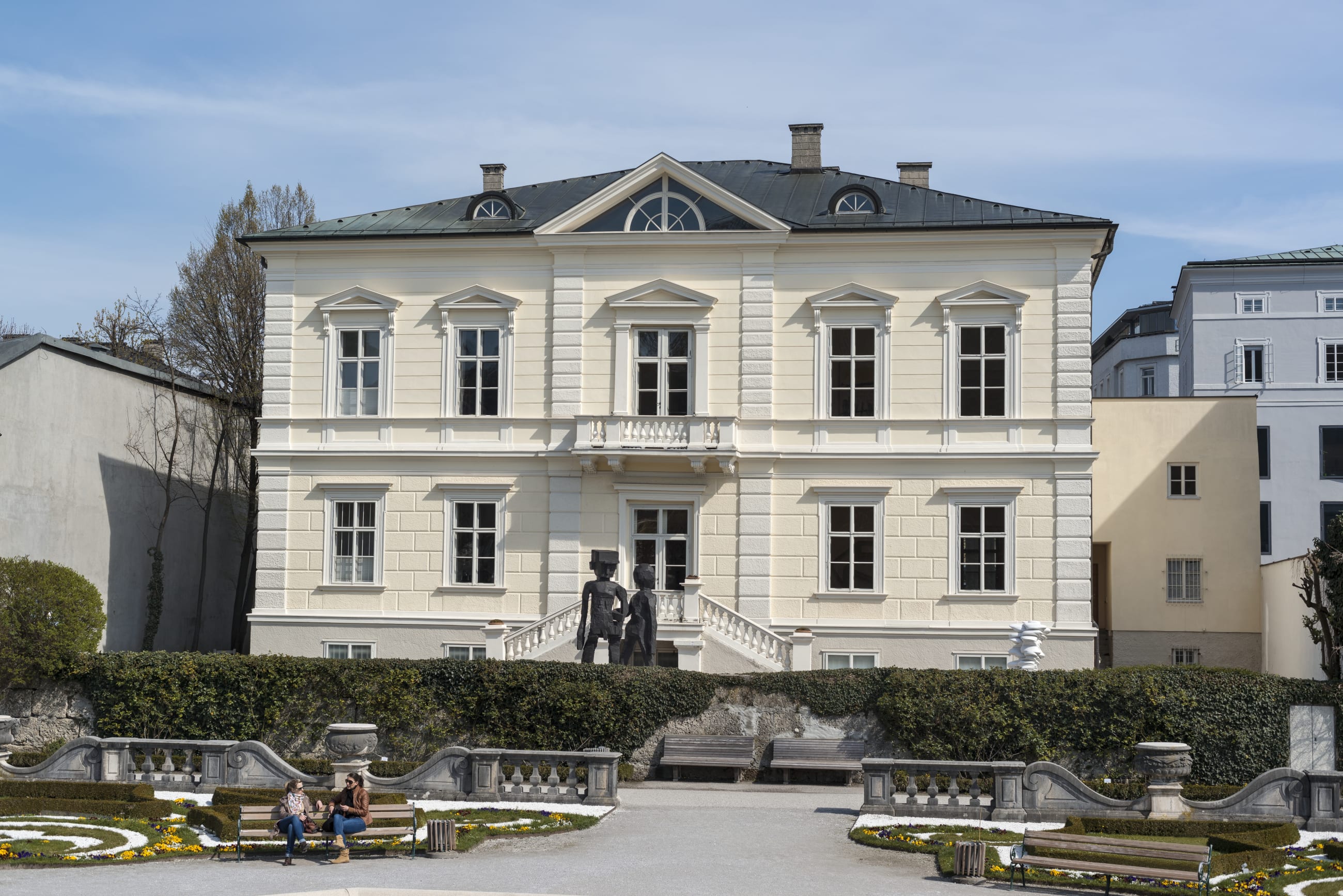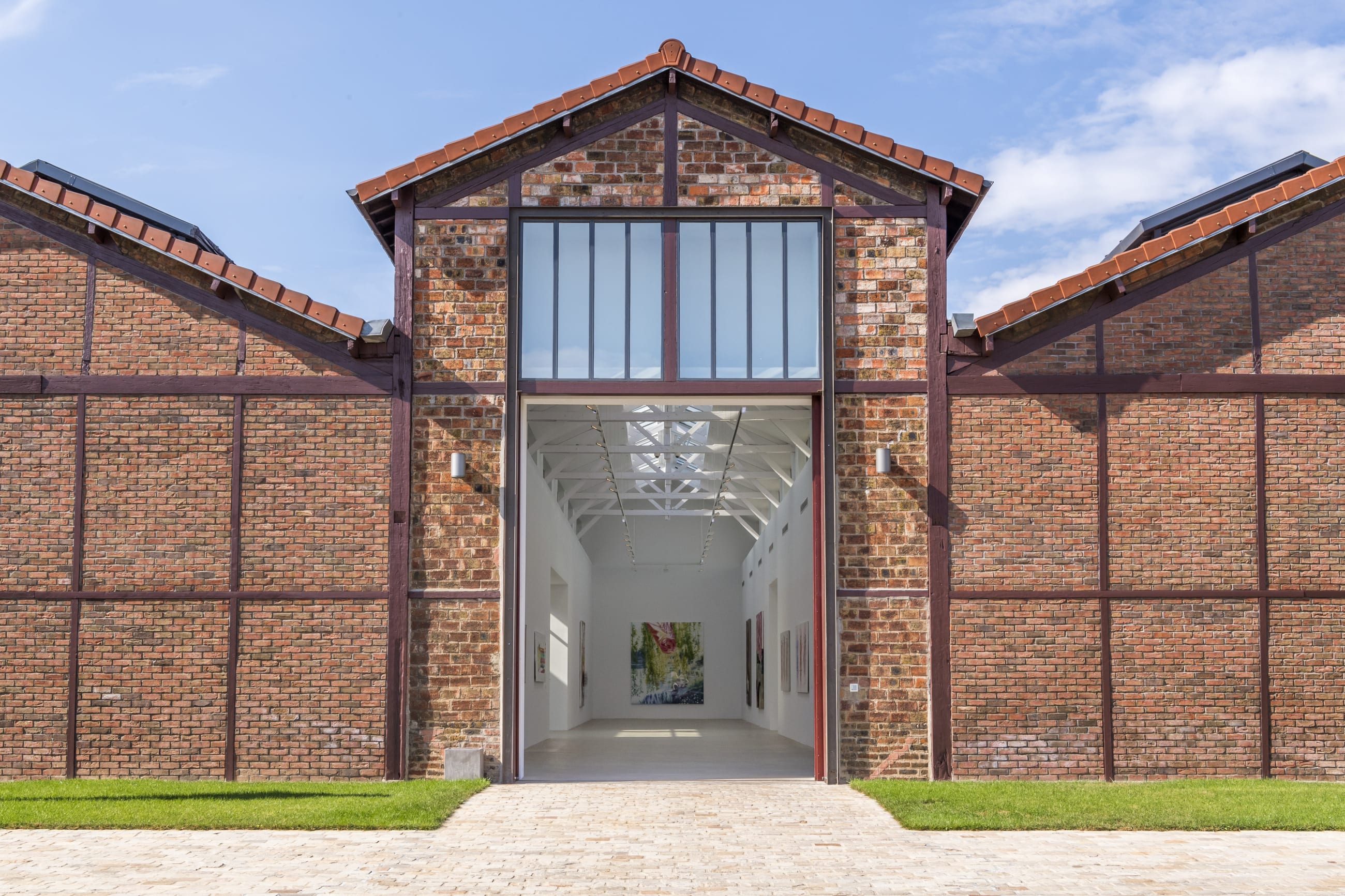Overview
Ein Bein von Manet aus Paris at Thaddaeus Ropac Paris Pantin presents monumental paintings, intimate works on paper and a bronze sculpture created by Georg Baselitz over the course of the last year. The paintings on view represent a continuation of the now 87-year-old artist's perpetual grapple with the conventions of portraiture, returning to the two subjects who have marked his seven decades of artistic production more than any other: himself and his wife, Elke. Working on the floor, the artist used a walking frame to navigate the canvases, turning the tangle of lines made by its wheels in the paint into a central compositional element. Demonstrating this novel mark-making technique, the new paintings bear witness to Baselitz's unrelenting impulse to experiment.
Baselitz has long returned to the same familiar subjects in his portraits – namely himself and his wife – in order, counterintuitively, to draw attention away from the subject and towards the act of painting itself. The technical and compositional innovations with which he has marked the second half of the 20th century have all been explored through portraiture, as have changing historical and personal contexts. From the artist’s early self-portraits at the turn of the 1960s depicting a young man, sorrowful yet insolent, against the turbulent backdrop of post-war Germany; to his first rendition of his wife copied from a photograph in 1969; to his first double portrait of himself and Elke in 1975, the works on view continue this evolution. Reflecting the inevitability of the passing of time, several feature a bed frame that recalls at once Otto Dix’s portraits of his elderly parents and Baselitz’s own 2019 depiction of Elke’s iron bed during her stay in hospital. The couple are now pallid spectral figures on grounds of grey-black, ‘like the non-colour of Manet’s The Fifer, which eliminates depth and gives the white that defines Baselitz’s motif the ghostly aspect of ectoplasmic bodies’, as curator Bernard Blistène writes in the catalogue accompanying the exhibition.
As his canvases became larger over the years, painting on the floor became increasingly fundamental to Baselitz’s method, and in works as early as the early 1990s, his footprints and the outlines of silhouetted tins of paint that he had placed on the canvas while he worked form an integral textural element in the surfaces of his paintings. In his recent works, as well as ever-denser clouds of footprints that flurry around his figures as the artist manoeuvres himself in small, precise steps around their contours, a novel element emerges to trouble the limit between figure and ground, as well as between painter and painting. Baselitz uses a walking frame to move around his canvases, ploughing its wheels through the still-wet paint and leaving their prints on the sombre grounds as networks of lines. In some works, they form concentric webs that orbit the figures; in others they lead off the edge of the paintings, as if ready to carry the apparition-like images away with them. Destructive in undoing or crossing out the figures, and yet unifying in their doing so, the linear imprints become wrinkles or scars: as Blistène writes, ‘as if one hand has destroyed what the other has built’.
Through the addition of the wheel prints in the paintings on view, Baselitz associates himself with the 20th-century artists who used vehicles to augment or obfuscate their own hand, or to channel visually the intangibility of time or energy, like Robert Rauschenberg and John Cage’s Automobile Tire Print (1953) or Joseph Beuys’s Is It About a Bicycle (1982). His use of the walker also inscribes him in the history of artists who, faced with physical constraints as they aged, have invented new tools for themselves, like Henri Matisse’s bamboo stick. The walker adopted by the artist out of necessity becomes, then, more aligned with the ‘living paintbrushes’ of Yves Klein’s Anthropometries. Feet and legs have been a recurring theme since Baselitz’s early works, symbolising a tactile connection with the earth: ‘when I’m painting on the floor, the contact downward – feeling for what is under it – is really important’, he explained in 2017. The wheel prints become, then, an extension of this visual vocabulary. Even the title of the exhibition, ‘A leg by Manet from Paris’, at once playfully quips on Manet’s difficulty painting legs and feet, while acknowledging the amputation of one of the French painter’s own feet at the end of his life.
At the heart of the exhibition is a new bronze sculpture, which creates a tangible echo of this ‘contact downwards’, bearing down firmly through its two legs and the four further leg-like buttresses that encircle it. Carving its form directly from a single piece of wood before casting it in bronze, Baselitz uses the same technique here as in his very first sculpture, made for the 1980 Venice Biennale, which he carved with an axe and chisel. For the sculpture on view, Baselitz took inspiration as much from the formal dynamism and elongated silhouettes of north-east Nigerian Mumuye sculptures – which are often, like Baselitz’s, carved from single pieces of wood – as from the twisting limbs and compositional tension characteristic of Mannerist art. Bringing together these diverse references, the sculpture in the exhibition also visually recalls the figures in the paintings: elegant and slender, long-legged and yet seemingly suspended.
It was a dream that inspired Baselitz to paint himself and his wife once again with a new evanescent quality in 2015. Over the course of the last decade, he has returned almost compulsively to the motif, with his light, sometimes effervescent treatment of paint suggesting his ageing body and that of his wife. In the drawings on view, the same spindly figures with their exaggerated limbs found in the paintings are instead rendered in red or black ink: a medium that equally contributes to a disarming sense of corporeal fragility. Baselitz is remarkable in his transformation of the obstacles imposed by age into opportunities for renewal in a way that is at once poignant, witty, and, as Blistène once put it, ‘exhales the pleasure of painting’. The exhibition at Thaddaeus Ropac Paris Pantin presents a vision that is – as Andreas Zimmermann has commented about Baselitz’s recent work – ‘filigree and powerful at once: a typical Baselitz paradox.’
Ein Bein von Manet aus Paris at Thaddaeus Ropac Paris Pantin will be accompanied by an exhibition catalogue with a text by Bernard Blistène. On Saturdays throughout May and June, the exhibition will be brought to life with a programme of documentary films on artists represented by the gallery.































